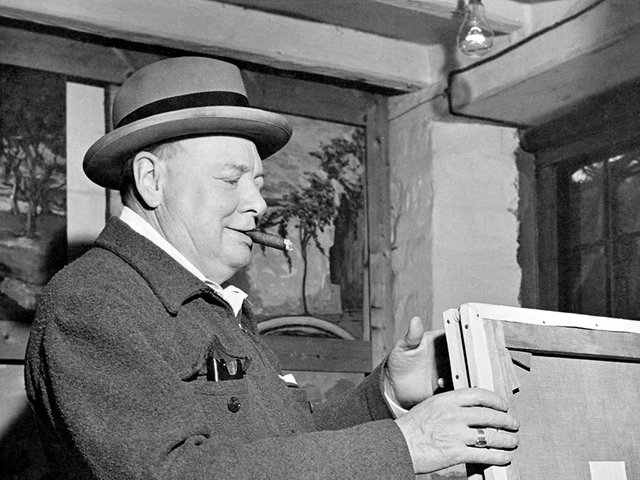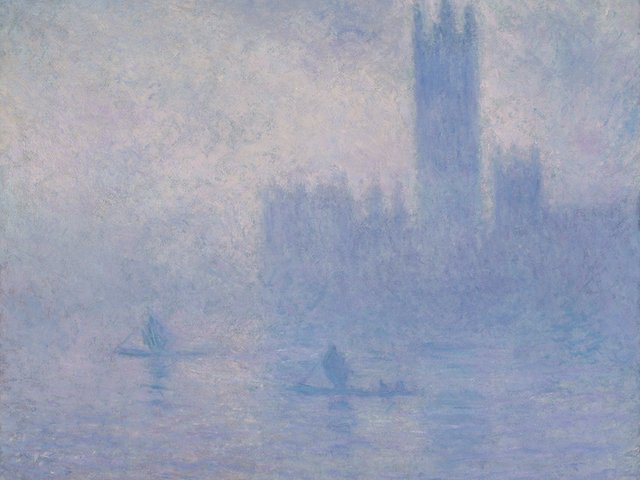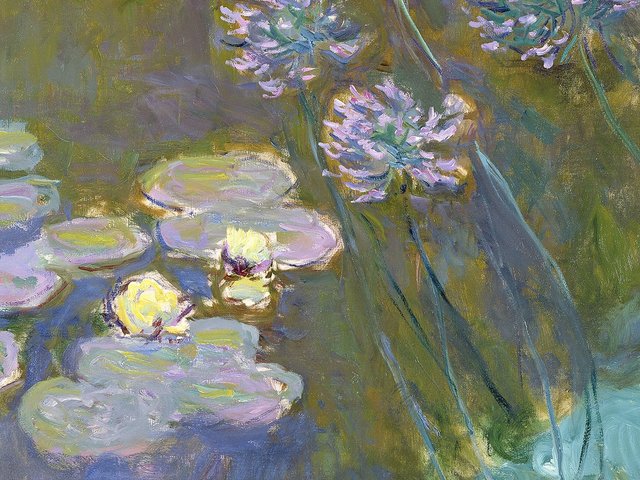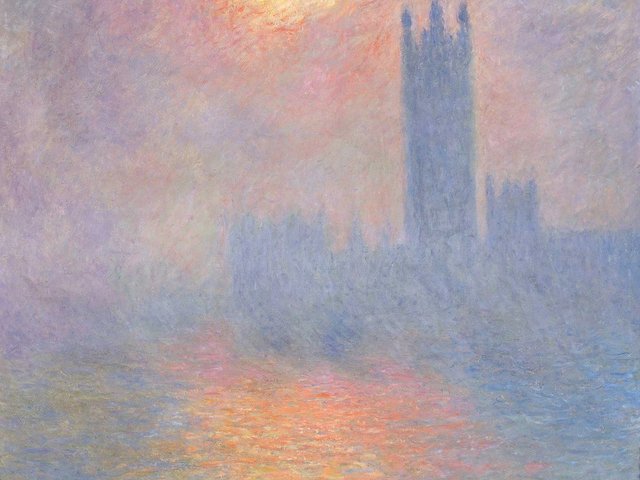What were the surprises in bringing Monet to London? At the Courtauld Gallery’s exhibition, which closed last month, specialists had a very unusual opportunity to study the individual Thames paintings gathered from around the world and, even more importantly, to view them as a group.
Karen Serres, the curator of Monet and London: Views of the Thames (27 September 2024-19 January 2025) spotted a barely visible smoking factory chimney in the fog on the left edge of The Houses of Parliament, Sunset (1900-03). It was on loan from the collector Hasso Plattner’s Museum Barberini in Potsdam. (He bought the picture at Christie’s in 2022 for $76m.)
“Did Monet invent the chimney?” Serres asked, not associating wealthy Westminster with heavy industry. After studying maps, she realised that it was actually on the other side of the river at Vauxhall, with its industrial riverfront. Monet had accurately depicted his scene.
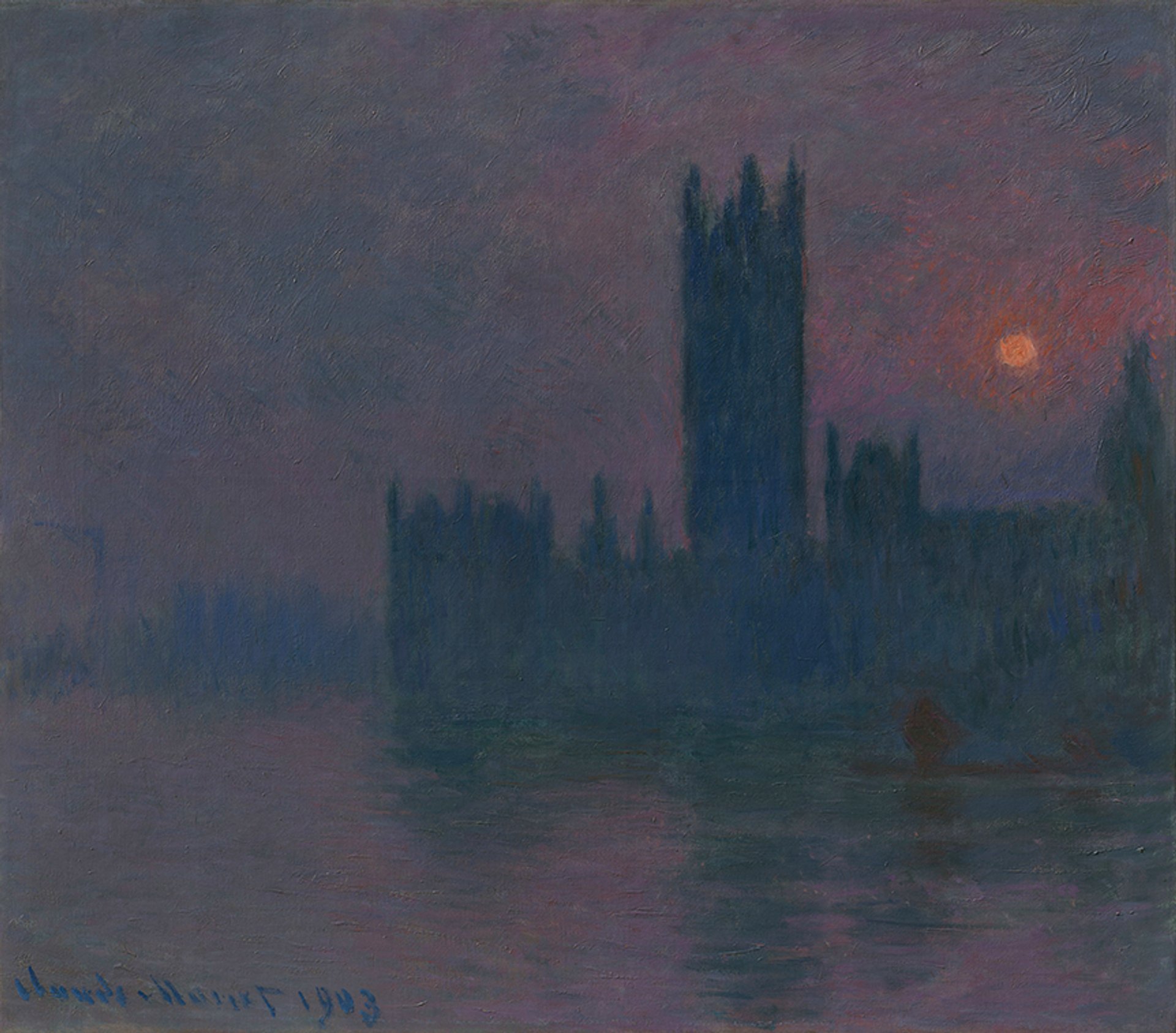
Karen Serres, the curator of the Courtauld show, spotted a smoking factory chimney in the fog on the left edge of The Houses of Parliament, Sunset; maps showed that it was accurately depicted, across the Thames at Vauxhall © 2025 Museen der Hasso Plattner Foundation gGmbH, Museum Barberini
Plattner’s painting also raises an intriguing question: did Monet paint his striking sun discs exactly where he saw them? This issue is particularly relevant when it comes to the artist’s most famous Normandy work, Impression Sunrise (1872-73, now in Musée Marmottan Monet, Paris), which gave its name to the Impressionist movement. Some art historians have dated this masterpiece by determining what day the sun would have risen in precisely this position from his viewpoint.
When it comes to Monet’s sun discs viewed through London’s thick smog, they are elegantly positioned. So, did Monet deliberately place his easel in a spot where he could view this effect—or did he shift the sun for artistic reasons?
Richard Thomson, a Monet specialist at the Edinburgh College of Art, observes that the suns have a clear purpose in the House of Commons series: “They are circular shapes against the vertical lines of the towers, a hot colour against the cool tones.”
When I hung the show I was struck by how incredibly varied the paintings wereKaren Serres, curator
Thomson concludes: “Monet would certainly have observed these setting suns from across the river, but perhaps not exactly in these precise positions.” If so, the placement of the suns is of limited help in dating.
Jennifer Thompson, a curator at the Philadelphia Museum of Art (which lent a Waterloo Bridge scene), stresses the importance of seeing the actual pictures to understand Monet’s art. “Reproductions don’t do full justice to the paintings and seeing them assembled in London made differences in palette, surfaces and atmospheric effects more prominent than I had expected,” she says.
But the impact of the Courtauld’s exhibition came not so much from the individual paintings, but from the chance to see them as a group. When planning the exhibition, Serres worried that it might be boring to see the same motif over and over again.
Her concerns were unwarranted: “When I hung the show I was struck by how incredibly varied and different the paintings were. Even the viewpoints were not exactly the same. For those subtle changes you really need to see the works together in the same place.”
Subtleties of colour and tone are also more difficult to discern in reproductions. Serres explained: “Monet uses purple in almost all of the London paintings, sometimes dark and sometimes pale. His rendering of light can be best appreciated when you see the pictures side by side.”
Monet’s technique on his three London visits between 1899 and 1901 was to begin his compositions from a vantage point by the Thames, often from his balcony in the Savoy Hotel. Altogether, more than 90 paintings of London scenes survive.
He then took the paintings back to his studio in Giverny to rework, often some years later. The Courtauld show included 21 pictures, 18 of which Monet had selected to display in a planned 1905 exhibition in London’s Dowdeswell gallery. This show never took place because Monet no longer had enough paintings he was satisfied with, following his successful sales in Paris the previous year.
Serres ruefully admits that, for her, the Courtauld exhibition has “slightly ruined” the experience of seeing the individual paintings: “They are so much more powerful when they are together, but at least I now have the memory of looking at them as an ensemble”.



